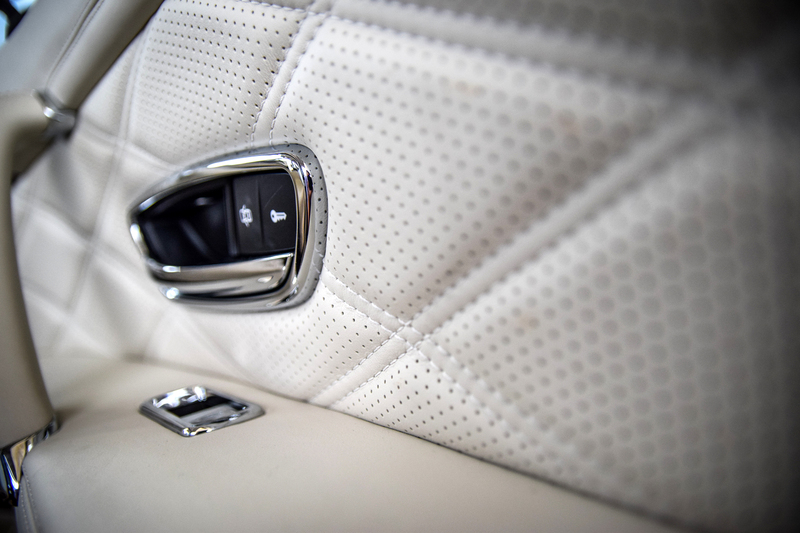Harness Techniques to Eliminate Pet Odors
Posted on 22/08/2025
Harness Techniques to Eliminate Pet Odors: The Ultimate Guide
Every pet brings joy, companionship, and warmth into your home--but they can also bring along some unwanted fragrances. Pet odors can be persistent, easily permeating furniture, rugs, and even walls, making homes less inviting. If you are looking for ways to effectively eliminate pet odors, you're in the right place. This comprehensive guide covers the best methods and harness techniques to completely get rid of pet odors, ensuring a fresher and happier living environment for you and your furry friends.
Understanding the Root Causes of Pet Odors
Before diving into solutions, it's essential to understand why pet odors linger. Pets, particularly cats and dogs, naturally produce dander, oils, and sometimes have "accidents" that are absorbed by soft furnishings. Even a well-groomed pet can leave behind scents that build up over time. Urine is especially notorious because its compounds break down into ammonia--a strong, lingering smell.
Why Pet Odors Are So Persistent
- Absorption by Soft Materials: Fabrics, carpets, and porous surfaces trap odors easily.
- Protein-Based Stains: Pet urine and saliva contain proteins that conventional cleaners often fail to break down.
- Microbial Activity: Bacteria feast on residues, causing additional scents over time.
With this knowledge, we can harness techniques to eliminate pet odors at the source instead of just masking them.

Immediate Steps to Manage Pet Odors
As soon as you notice an odor, quick action is vital. Prompt intervention stops odors from setting in and prevents stains from ruining your belongings.
Step 1: Identify the Source
- Perform a "sniff test" to locate the primary smell zones.
- Use a UV blacklight flashlight to detect old urine stains on carpets or walls.
Step 2: Blot, Don't Rub
- Use paper towels or a clean cloth to blot fresh accidents. Press gently to absorb as much liquid as possible.
- Rubbing can spread the stain and push the odor deeper into fibers.
Step 3: Apply a Cleaning Solution Immediately
- Mix equal parts white vinegar and water, and spray onto the area. Vinegar neutralizes odors naturally.
- After a few minutes, blot again to remove excess moisture.
- Sprinkle baking soda over the dried area to absorb leftover smell, then vacuum after an hour.
Pro Tip: Always test cleaning solutions on a hidden spot to avoid color fading or damage.
Harness Professional and Home Techniques to Eliminate Pet Odors
For persistent or recurring problems, these in-depth cleaning methods and technologies can help completely eliminate pet odors from your home.
1. Enzymatic Cleaners: The Gold Standard
Enzyme-based cleaners are specially formulated to break down the uric acid and protein components of pet urine and other secretions. Unlike regular detergents, these cleaners "digest" the substances causing the smell.
- Apply as per manufacturer's instructions directly on the affected area.
- Allow the product to dry naturally for full effect. The enzymes continue working even as the spot dries.
2. Steam Cleaning for Deep Clean
Harness the power of a home steam cleaner to sanitize carpets and upholstery. Steam penetrates deep, loosening odor-causing residues, and kills bacteria. Always vacuum thoroughly before steaming for best results.
3. Activated Charcoal and Baking Soda
- Activated charcoal pouches placed near litter boxes, pet beds, or in shoes help absorb and neutralize persistent odors.
- Baking soda is a versatile deodorizer. Sprinkle it liberally on carpets, leave overnight, then vacuum.
4. Harnessing Air Purifiers with HEPA and Carbon Filters
A high-quality air purifier fitted with both HEPA and activated carbon filters can remove pet dander, hair, and odors from the air. This is especially useful in homes with multiple pets or allergies.
5. Routine Washing and Cleaning
- Wash pet bedding, blankets, and soft toys weekly with mild detergent and an added cup of vinegar, then dry them thoroughly.
- Vacuum carpets and upholstery frequently, focusing on corners and hidden spots where fur and dander accumulate.
- Clean hard floors with pet-safe cleaners to prevent odors from urine or oils.
Specialized Harness Techniques to Eliminate Pet Odors
Some situations demand extra effort, such as multi-pet households or stubborn, recurring smells.
Combating Cat Litter Box Odors
- Scoop clumps at least once daily.
- Wash the litter box thoroughly each week with hot water and mild soap to remove residue.
- Switch to high-quality, odor-absorbing litters like bentonite clay, silica crystals, or natural alternatives such as pine pellets.
- Add baking soda to the bottom of the box for extra odor control.
Puppy Pads, Kennels, and Pet Areas
- Wipe surfaces daily with a dilute vinegar solution or mild antibacterial cleaner.
- Ensure puppy pads and newspapers are changed frequently to prevent ammonia buildup.
- Allow ample ventilation in confined pet areas.
Pet Urine Odors on Upholstery and Mattresses
- Remove all covers and wash according to care instructions with added vinegar or an enzymatic cleaner.
- Sponge the stained area with a solution of hydrogen peroxide (test for colorfastness), baking soda, and a little dish soap.
- Allow it to foam and sit for 30 minutes, then blot and let air dry.
Harnessing the Power of Prevention
Prevention not only saves you work but also extends the lifespan of your home's furnishings. Here are proven strategies to prevent pet odors from becoming a recurring problem:
1. Groom Pets Regularly
- Bathe dogs as recommended for their breed and lifestyle.
- Brush regularly to remove loose fur and dander before it falls onto furniture or carpets.
- Wipe paws before pets enter the home using pet-friendly wipes or a damp cloth.
2. Train and Reinforce Positive Behaviors
- Ensure pets are house-trained and know where to relieve themselves.
- Use crate training and reward systems for puppies to prevent indoor accidents.
3. Regular Home Maintenance
- Deep clean twice a year to remove built-up residues.
- Replace furnace and HVAC filters regularly to trap pet hair and dander.
- Clean and deodorize drains, as odors can sometimes be drawn up from plumbing by pets playing with water bowls.
Eco-Friendly and DIY Pet Odor Solutions
Many harnessed pet odor elimination methods rely on natural ingredients you may already have at home:
- Lemon Juice: Dilute and use as a freshening spray for hard surfaces.
- White Vinegar: Effective against bacteria and odors on floors and near litter areas.
- Essential Oils (Careful!): Lavender, lemon, or eucalyptus diluted in water make pleasant air fresheners, but always check they are safe for your specific pet type.
- Sunshine: Place items like bedding or toys in direct sunlight to harness UV rays' natural disinfectant powers.
Important: While using any scent or cleaner, ensure it is non-toxic and safe for pets, especially cats, who are sensitive to many essential oils.
Common Mistakes to Avoid When Eliminating Pet Odors
- Masking instead of removing: Air fresheners, sprays, or scented candles only cover up smells. Odor molecules must be neutralized or removed at their source.
- Ignoring underlying health issues: Frequent accidents may indicate urinary tract infections or behavioral problems. Consult your veterinarian if issues persist.
- Over-wetting carpets or furniture: Excess moisture can lead to mold growth, which adds another layer of odors.
- Skipping regular cleaning: Waiting until odors are overpowering makes them harder to treat.
Harness Professional Help If Needed
If home remedies and cleaning routines don't succeed in eliminating persistent pet odors, consider:
- Professional carpet or upholstery cleaning services--these experts use industrial equipment and stronger enzyme treatments.
- Ozone generators: When used according to guidelines, these machines can neutralize severe odors throughout the air and porous materials. Remove everyone from the area while in use.
- Consulting a veterinarian to identify any medical or behavioral causes contributing to repeated accidents.

Frequently Asked Questions About Pet Odor Elimination
How often should I deep clean to keep pet odors at bay?
For most households, deep cleaning every three to six months is sufficient. High-traffic or multi-pet homes may benefit from more frequent sessions, especially in the areas pets spend most time.
Can I use bleach to eliminate pet odors?
Bleach can disinfect but does not truly neutralize odors, especially urine. Also, bleach reacts with ammonia (from urine), releasing dangerous fumes. Rely on enzymatic cleaners instead for odor elimination.
Are there ways to keep my house smelling fresh with multiple pets?
Yes! Daily cleaning routines, air purifiers, regular grooming, and maintaining good ventilation are essential harness techniques to prevent and eliminate pet odors--even in homes with several animals.
Your Fresh, Pet-Friendly Home Awaits
Eliminating pet odors is not only about comfort; it's about maintaining a healthy environment for both your family and your beloved pets. By combining swift action, thorough cleaning, harnessed preventive strategies, and consistent routines, you can confidently say goodbye to lingering pet odors.
With the right knowledge and techniques, you'll enjoy a fresh-smelling, clean, and inviting home--no matter how many paws roam your floors!




